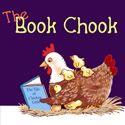
46% of American adults cannot understand the label on their prescription medicine
56 percent of young people say they read more than 10 books a year, with middle school students reading the most. Some 70 percent of middle school students read more than 10 books a year, compared with only 49 percent of high school students.
15% of all 4th graders read no faster than 74 words per minute, a pace at which it would be difficult to keep track of ideas as they are developing within the sentence and across the page.
15 percent of the population has specific reading disorders. Of these 15 percent as many as 1/3 may show change in the brain structure.
It is estimated that as many as 15 percent of American students may be dyslexic.
50 percent of American adults are unable to read an eighth grade level book.
One-third of 500,000 = 22? There are almost half a million words in our English Language - the largest language on earth, incidentally - but a third of all our writing is made up of only twenty-two words.
In a class of 20 students, few if any teachers can find even 5 minutes of time in a day to devote to reading with each student.
Forty-four percent of American 4th grade students cannot read fluently, even when they read grade-level stories aloud under supportive testing conditions.
Forty-four percent of American 4th grade students cannot read fluently, even when they read grade-level stories aloud under supportive testing conditions.
In 1999, only 53 percent of children aged 3 to 5 were read to daily by a family member. Children in families with incomes below the poverty line are less likely to be read aloud to everyday than are children in families with incomes at or above the poverty line.
Out-of-school reading habits of students has shown that even 15 minutes a day of independent reading can expose students to more than a million words of text in a year.
The average reader spends about 1/6th of the time they spend reading actually rereading words.
Good readers in 5th grade may read 10 times as many words as poor readers over a school year.
According to the 2003 National Assessment of Educational Progress (NAEP), 37 percent of fourth graders and 26 percent of eighth graders cannot read at the basic level; and on the 2002 NAEP 26 percent of twelfth graders cannot read at the basic level. That is, when reading grade appropriate text these students cannot extract the general meaning or make obvious connections between the text and their own experiences or make simple inferences from the text. In other words, they cannot understand what they have read.
Students who reported having all four types of reading materials (books, magazines, newspapers, encyclopedias) in their home scored, on average, higher than those who reporter having fewer reading materials.
When the State of Arizona projects how many prison beds it will need, it factors in the number of kids who read well in fourth grade.
First grade children with good word recognition skills were exposed to almost twice as many words in their basal readers as were children who had poor word recognition skills.







No comments:
Post a Comment